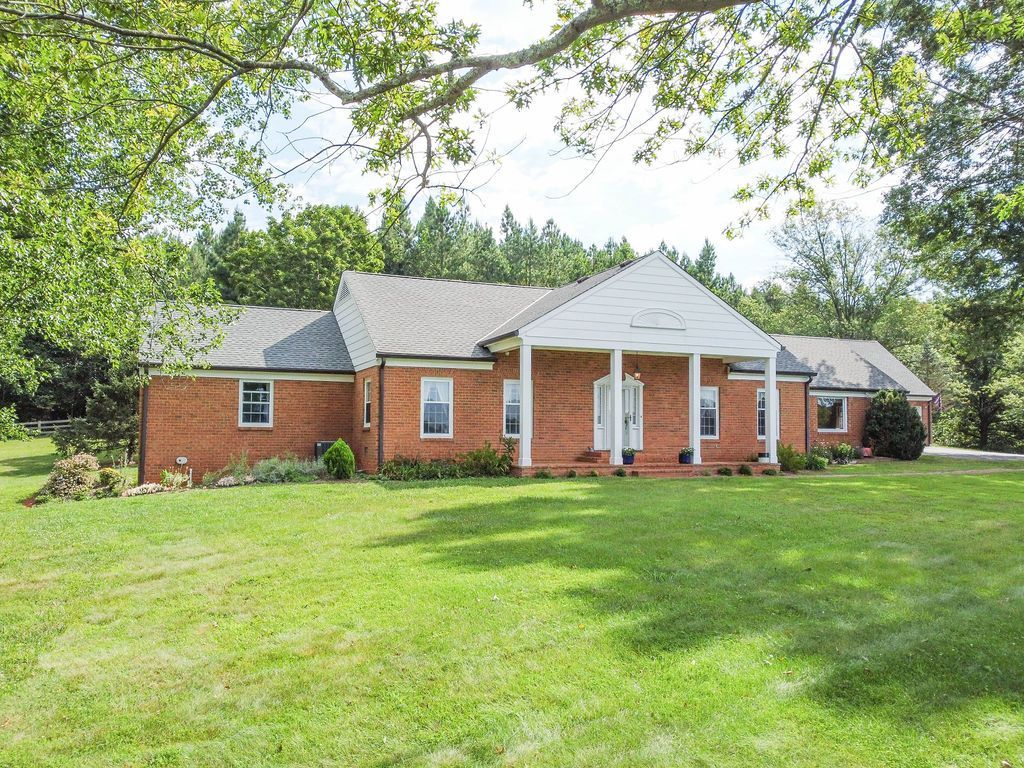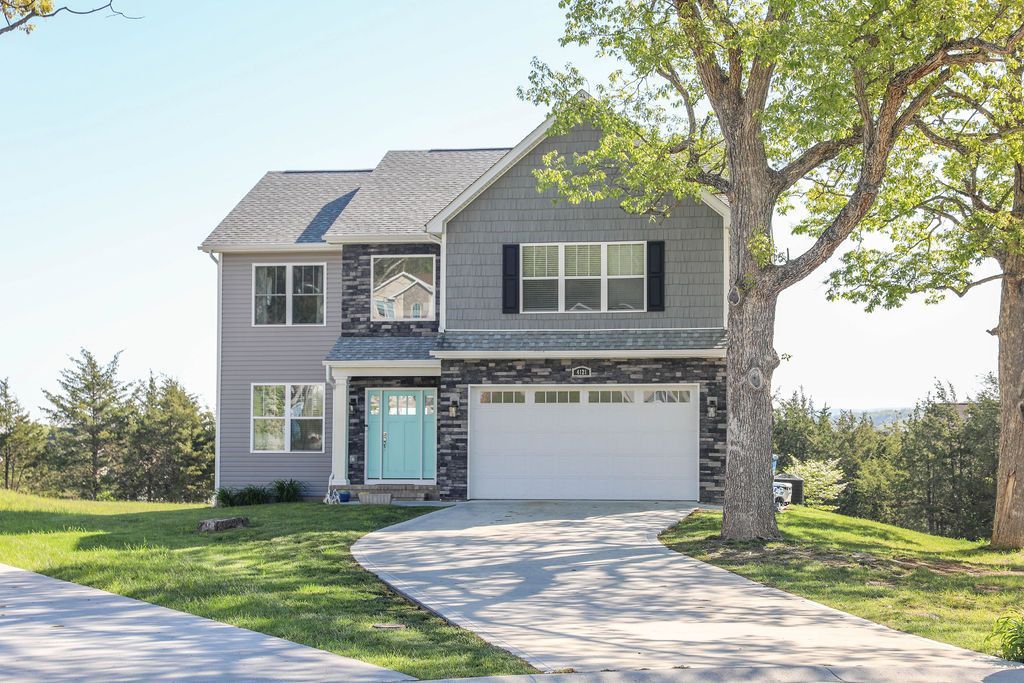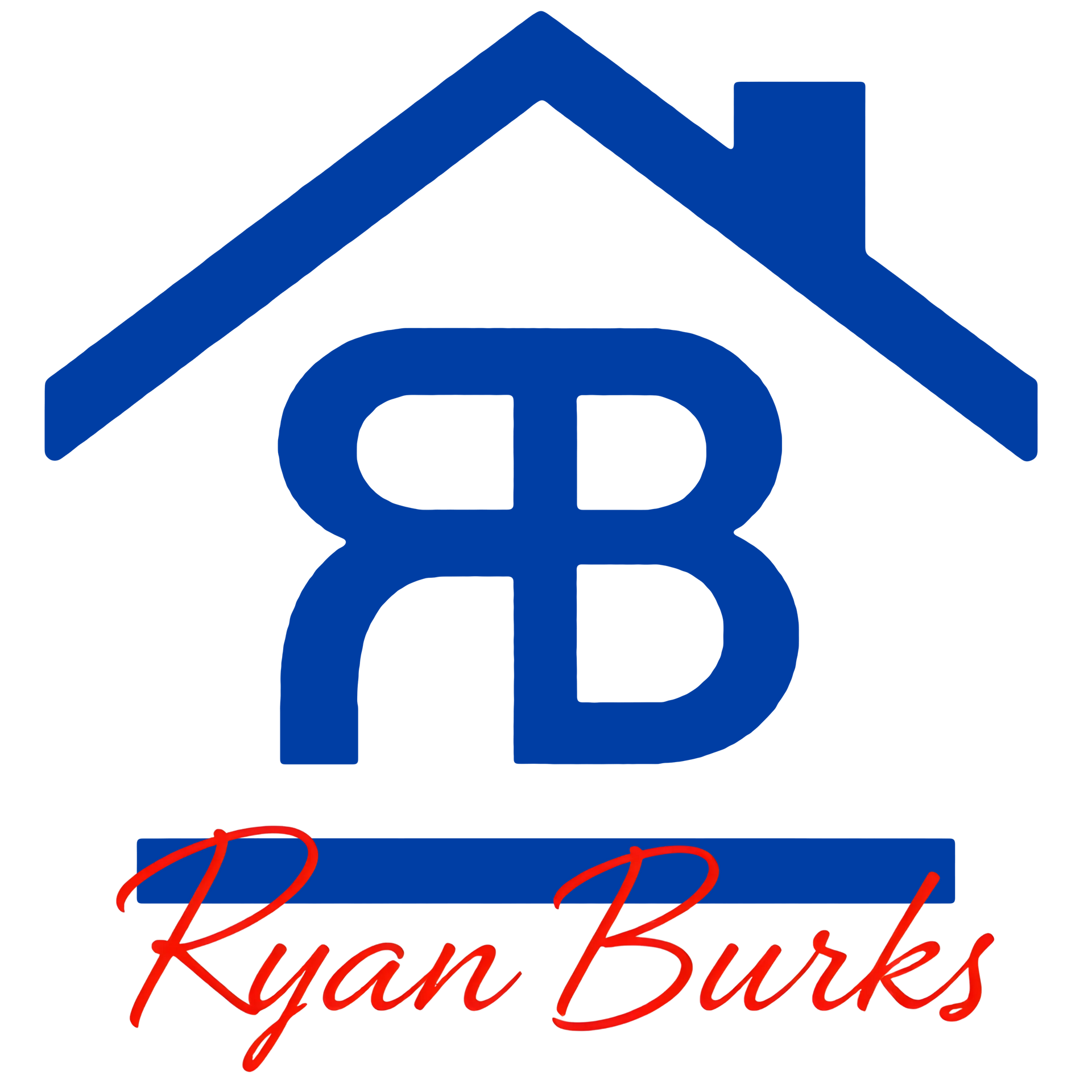How to Get the Best Price When Selling Your Home in Waynesboro & Staunton
This guide helps you maximize your sale price in Waynesboro and Staunton by showing how to set competitive pricing, stage your home for local buyers, choose optimal market timing, and negotiate confidently with buyers and agents so you secure top offers while minimizing delays and costly concessions.
Key Takeaways:
- Set a competitive, market-based price using a CMA from a local agent experienced in Waynesboro & Staunton to attract buyers and shorten time on market.
- Maximize curb appeal and complete minor repairs, then use professional staging and photography to boost perceived value.
- Work with a local agent to target buyers and highlight regional strengths (Blue Ridge access, downtown Staunton historic charm), and time the listing for peak demand.
Understanding the Real Estate Market
Analyze local inventory, recent sales and days-on-market to set an effective price; compare homes sold within the past 90 days inside a one-mile radius, factor in school zones and commuting routes, and watch list-to-sale ratios (often 95–99% locally). You should expect average DOM around 30–45 days; if your property exceeds that, adjust marketing or price promptly to stay competitive.
Current Trends in Waynesboro & Staunton
Buyers here range from retirees drawn to historic Staunton to remote workers and Charlottesville commuters in Waynesboro; new construction accounts for roughly 2–3% of annual closings. Inventory typically runs about 1–3 months’ supply, creating pressure in many price bands, while median sale prices generally sit in the $200k–$300k range depending on neighborhood and home condition.
Seasonal Factors Affecting Home Sales
Spring brings the strongest buyer traffic—about 20–40% higher than winter—with families targeting summer closings, so curb appeal and competitive pricing matter most then; fall delivers fewer listings but more motivated buyers, and winter offers limited showings paired with a higher share of serious inquiries.
- Spring: stage aggressively, update landscaping, and price to capture demand.
- Summer: highlight school zones and outdoor spaces for family buyers.
- Fall: focus on interior warmth and flexible closing timelines to attract relocating buyers.
- The winter window can work to your advantage with limited competition and serious buyers.
You should time repairs and pro photography for peak months—listings that go live in April commonly sell 10–15% faster and closer to asking price than December listings. If you must sell in low season, offset reduced traffic with price adjustments, virtual tours and targeted online ads to preserve visibility and buyer interest.
- Schedule professional photos within 48 hours of listing to capture peak light.
- Offer flexible showing times through June to maximize family viewings.
- The best window to list for maximum buyer traffic is late April through early June.
Preparing Your Home for Sale
Home Improvements That Maximize Value
Focus on cost-effective projects buyers notice: fresh paint, updated lighting, and new cabinet hardware. A minor kitchen refresh can recoup roughly 60–80% of its cost, while replacing worn flooring or upgrading a dated bathroom often yields strong return on investment. You should prioritize roof, HVAC, and water damage fixes because inspection reports drive negotiations. Curb appeal investments like landscaping, a new mailbox, or a painted front door typically boost first impressions for under $1,500.
Staging Tips to Attract Buyers
Declutter and depersonalize to create neutral, inviting spaces that photograph well—aim to remove 60–80% of small decor items. Arrange furniture to open sightlines and show clear traffic flow; buyers respond to rooms that look functional and spacious. Use layered lighting and neutral textiles, and consider a professional staging consult ($150–$500) or full staging ($1,200–$4,000) to reduce time on market and increase offers in competitive neighborhoods.
- Repaint high-traffic walls in warm gray or beige and touch up trim to make rooms read clean in listing photos.
- Swap heavy drapes for light-filtering shades and add LED bulbs to brighten rooms without raising utility costs.
- This helps generate stronger online interest and more showings during the critical first 7–14 days on market.
You should stage with the buyer’s lifestyle in mind: highlight the primary living areas and master bedroom first, since buyers mentally prioritize those spaces. Use a limited palette—two neutrals plus one accent color—and add real plants or simple artwork to create warmth without personalization. For homes in Waynesboro and Staunton, target features local buyers value, like a clear lawn, porch seating, or a tidy mudroom; staged properties in similar markets often experience faster sales and higher offer amounts, especially if photos are taken by a professional.
- Stage the living room and master bedroom to show scale—use smaller sofas or remove one chair if a room feels crowded.
- Keep countertops clear, leave one bowl of fruit or a vase of flowers, and store excess furniture offsite to maximize perceived space.
- This encourages emotional connection and increases the chance of multiple competing offers.
Setting the Right Price
Start by basing your number on hard local data: pull 3–5 comparable sales from the last 6 months within a mile, check current list-to-sale ratios (often 95–100% in many Staunton/Waynesboro neighborhoods), and adjust for condition, lot size, and recent upgrades. If you price 3–5% over realistic market value, you can add 2–4 weeks to days on market and lose buyer momentum; a competitive price that hits search thresholds will generate more showings and stronger offers.
Comparative Market Analysis
Run a CMA that compares sold, active, and pending listings, then quantify adjustments: price per square foot, days on market, and specific features like garages or finished basements. Use 3–5 close comps and show how each adjustment changed the suggested price, so you can justify your list price to buyers and appraisers with clear numbers.
CMA Breakdown| Data Point | How you use it |
| Comparable Sales | 3–5 sales, last 6 months, within ~1 mile to set baseline price per sq ft |
| Active Listings | Shows current competition and price positioning for buyer searches |
| Pending Sales | Indicates market direction—rising or cooling—helping final adjustments |
| Adjustments | Quantify value for condition, lot, garage, and recent renovations |
| Days on Market / List-to-Sale | Used to predict selling window and set price to attract timely offers |
Common Pricing Mistakes to Avoid
Avoid pricing emotionally or anchoring to what you paid; overpricing by 5–10% often reduces visibility and forces multiple price drops, which can result in selling below fair market value. Also don’t ignore the digital filters buyers use—pricing just above psychological thresholds (e.g., $300,000 vs $299,900) can exclude you from search results and limit showings.
Overpricing is the most frequent error: one local Waynesboro example listed a bungalow 12% above comps, sat 90 days, and finally sold roughly 8% below the original list after two reductions. Underpricing without strategy can leave money on the table, but a tactical initial price that targets 7–14 days on market often produces multiple offers and drives final sale price up. You should regularly review live data and be prepared to adjust within the first 10–14 days if showings and feedback are weak; that window determines whether momentum builds or stalls.
Marketing Your Home Effectively
Focus your budget where it drives measurable interest: list on the MLS, Zillow and Realtor.com, run targeted Facebook/Instagram ads within a 20-mile radius and age range tied to buyer profiles, and schedule three weekend open houses in the first two weeks. Aim to allocate roughly 0.5–1% of your expected sale price to marketing, use broker tours to reach local agents, and track views, saves and showing requests to tweak tactics in real time.
Online vs. Traditional Marketing Strategies
More than 90% of buyers begin online, so prioritize strong digital listings, email blasts to agent databases and paid ads with clear call-to-action links to virtual tours. At the same time, supplement with 2–3 targeted print ads in local papers, professional yard signage and at least one broker-only showing to capture neighborhood buyers and relocation agents; measure success by comparing online engagement to actual showing bookings and adjust frequency or creative after the first week.
Importance of Professional Photography
Professional photos can dramatically increase click-throughs and showing requests; budget $150–$400 for a photographer and request 20–25 edited images, plus a drone exterior and a 3D virtual tour when applicable. High-quality imagery sets your listing apart on MLS portals, social feeds and print materials, and typically translates into faster days on market and stronger offers.
Schedule the shoot after decluttering, minor repairs and staging, and plan for 3–5 exterior shots, 10–15 interior images highlighting the kitchen and main living spaces, one drone shot and a floorplan or virtual walkthrough. Ask for HDR processing, 2,000px+ resolution files for web, and twilight photos if your property has attractive evening curb appeal; these choices help capture buyer emotion and increase listing shareability among local agents and online audiences.
Negotiating Offers
When you receive offers, compare net proceeds after agent fees (typically 5–6%), closing costs, and any repair credits; for example, a $10,000 repair credit on a $350,000 sale plus 6% commission cuts net by roughly $31,000. Prioritize offers with preapproved financing, shorter inspection windows, and fewer contingencies. Use timed counters to push competing buyers to act and set firm closing dates that match your moving timeline to avoid last-minute concessions.
Strategies for Getting the Best Deal
You should lead with a competitive asking price and require 1–3% earnest money to deter weak buyers, plus a 48-hour response window on counters. If multiple offers arrive, consider an escalation clause increasing your net by $2,000 increments up to a cap. Push for limited inspection contingency periods (5–10 days) and ask buyers to specify repair thresholds to avoid low-dollar renegotiations that erode your proceeds.
Understanding Buyer Psychology
Buyers react to perceived value, urgency, and emotional cues, so stage rooms to target your likely buyer—families want functional layouts, professionals want move-in-ready tech. Pricing acts as an anchor: listing at $349,900 versus $350,000 can change search placement and perceptions. Limited showing windows create urgency and often prompt quicker, stronger offers; cash offers typically shorten closing by 2–3 weeks and carry more weight.
Tap into loss aversion by setting an offer deadline and showing social proof—post a sign-in sheet or note recent neighborhood sales (for example, three comps in the past six months). Present documented upgrades (receipts for a new roof or HVAC) to reduce buyer fear and justify a 2–5% premium. Also prepare a seller disclosure and a short repair addendum template so you can respond confidently when buyers push for fixes.
Closing the Sale
Expect the typical closing window to be 30–45 days from ratified contract; you’ll coordinate final walkthroughs, sign loan payoff and transfer documents, and hand over keys once funds clear. Prioritize confirming your payoff figure with the lender, getting an updated HOA estoppel if applicable, and verifying wiring instructions by phone to avoid fraud. Keep receipts for repairs and any prorations of taxes or utilities so the settlement statement matches what you agreed to.
Steps to Ensure a Smooth Closing Process
Contact your title company or real estate attorney within 48 hours of ratification so they can order title search, prepare closing figures, and request payoff statements. Complete agreed repairs at least 5–7 days before closing and schedule the final walkthrough within 24–48 hours of signing. Also provide clear forwarding address, ID, and insurance information, confirm buyer’s clear-to-close, and verify wire instructions in person or by known phone number to prevent fraud.
Legal Considerations in Home Selling
Address title defects, liens, and required disclosures early: a title search will reveal mortgages, tax liens, or mechanic’s liens that you must clear or escrow for. Use a written deed type—typically a general warranty deed—and ensure settlement documents reflect prorations, transfer/recordation fees, and any seller credits. Note that buyers with mortgage loans must receive a Closing Disclosure at least three business days before closing, which can affect timing.
If a lien appears—say an unpaid contractor lien from recent work—you may need a lien release or escrow holdback, which can add 7–21 days and legal fees. Failing to disclose material defects (water intrusion, septic issues, foundation repairs) can trigger post-closing claims; title insurance protects against unknown recorded defects but not all undisclosed issues, so review your state disclosure form carefully and keep copies of inspections, repair invoices, payoff statements, and the final settlement for any future disputes or tax reporting.
Summing up
Hence you can secure the best price in Waynesboro and Staunton by pricing competitively, staging to showcase your home's strengths, completing targeted repairs, and marketing across local and online channels; partner with an experienced agent who knows neighborhood comps, offer flexible showings, and negotiate firmly to maximize offers and close efficiently.
FAQ
Q: How should I price my home to get the best offer in Waynesboro & Staunton?
A: Start with a local comparative market analysis (CMA) that looks at recent sales within the same neighborhood, similar square footage, and similar age/condition — focus on homes sold in the last 60–90 days. Factor in list-to-sale ratios and average days on market for Waynesboro and Staunton; if inventory is low, you can price more aggressively. Adjust the price for condition, updates, lot size and any unique features (historic details in Staunton, outdoor access in Waynesboro). Decide on a strategy: price slightly below market to generate multiple offers, or price at true market value to attract qualified buyers and avoid long days on market. Run a seller net sheet that includes agent commissions, closing costs, prorations and typical repair concessions so you know the bottom line. Get a local agent’s input and consider a pre-listing inspection to avoid surprises that could lower your final price.
Q: What pre-listing improvements deliver the best return on investment here?
A: Focus on low-to-moderate cost items that improve first impressions and reduce buyer objections: deep cleaning and decluttering; fresh, neutral paint; minor plumbing/electrical fixes; updated light fixtures and cabinet hardware; professional photos and staging. Curb appeal matters—trim trees, mulch beds, mow lawn and repair the front steps. Kitchens and bathrooms sell homes: cosmetic updates (refacing cabinets, new countertops or hardware, fresh grout) often give strong ROI versus full remodels. Preserve desirable historic features in Staunton while modernizing systems; in Waynesboro emphasize outdoor living and views. Typical costs vary widely, but many sellers see the greatest value from staging, photos, paint and landscaping because they improve perceived value with relatively low expense.
Q: How can I market and negotiate to maximize the final sale price?
A: Use a multi-channel marketing plan: professional photography, a virtual tour, detailed MLS listing, targeted social ads, broker open house, and outreach to relocation networks and investor lists. Time listings for high-traffic days (early week) and give broad showing availability to capture weekend traffic. Screen buyers for pre-approval and strong earnest money to minimize failed offers. In negotiations, leverage multiple offers when possible—set an offer deadline or field best-and-final bids to stimulate competition. Use escalation clauses or appraisal-gap language when appropriate, and ask for favorable contract terms (short or flexible closing, seller rent-back) to increase net proceeds. Work with an experienced local agent who handles negotiations and appraisal conversations on your behalf to protect your sale price through inspection and closing contingencies.




